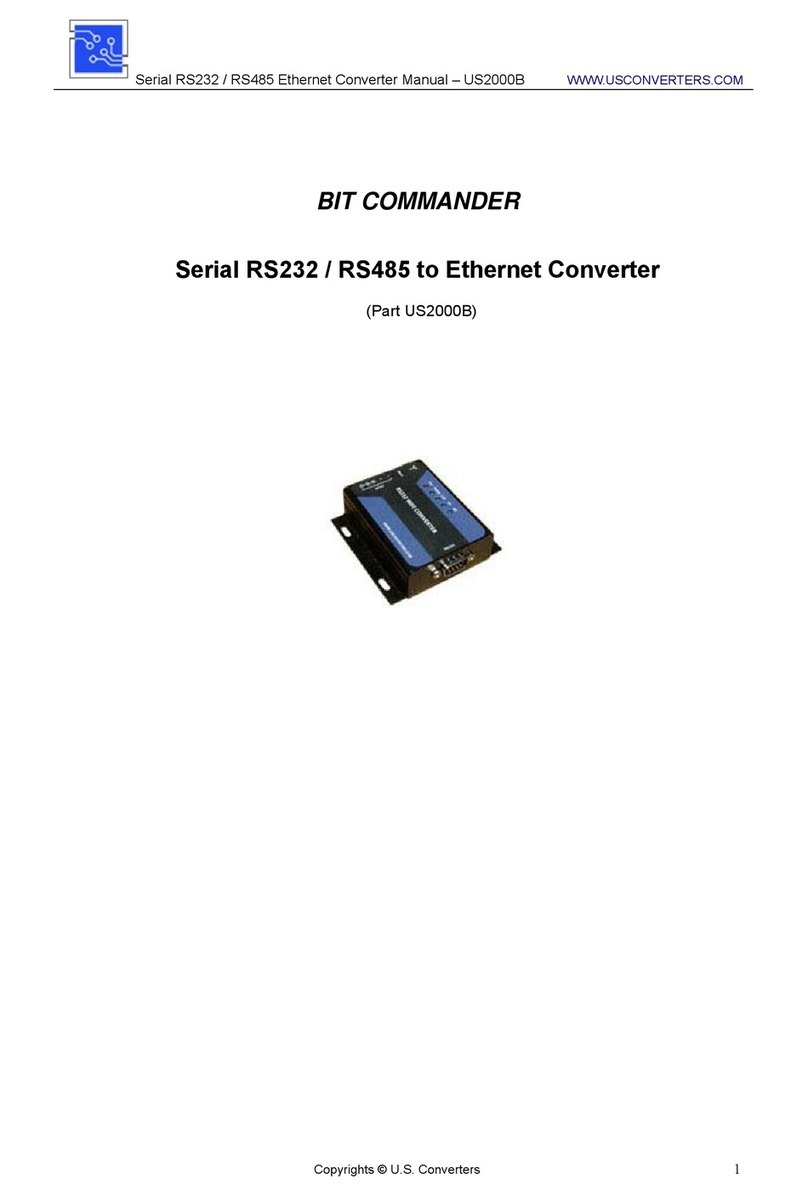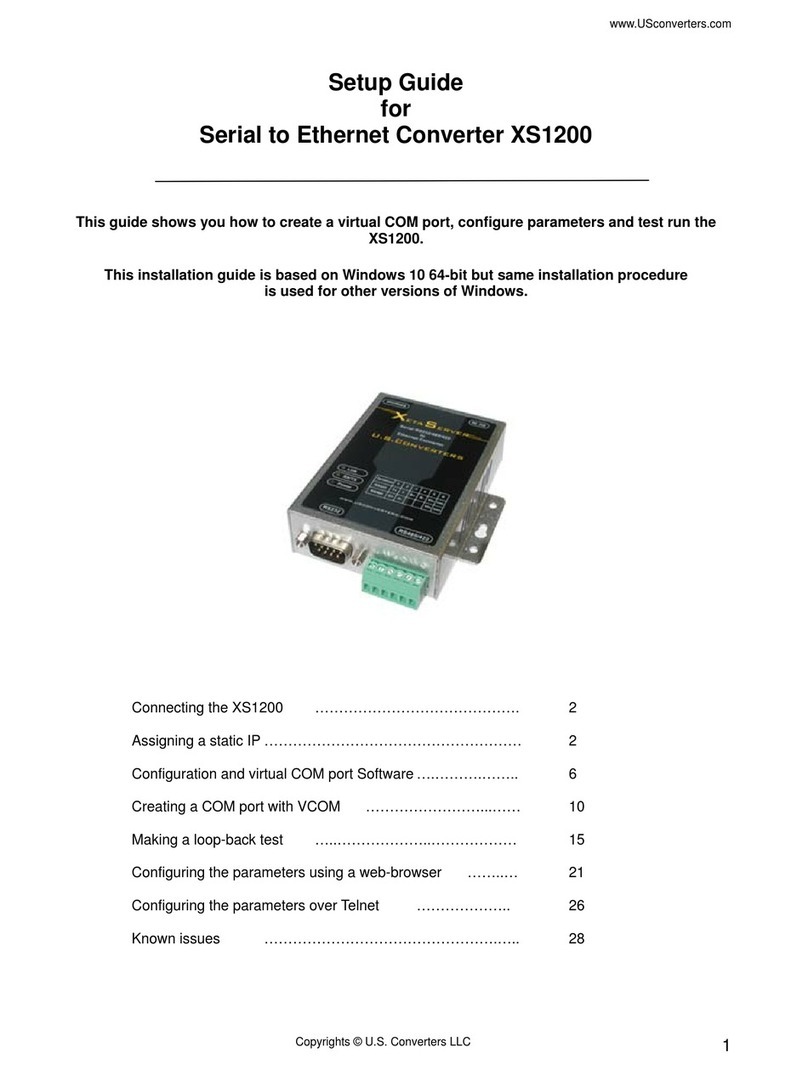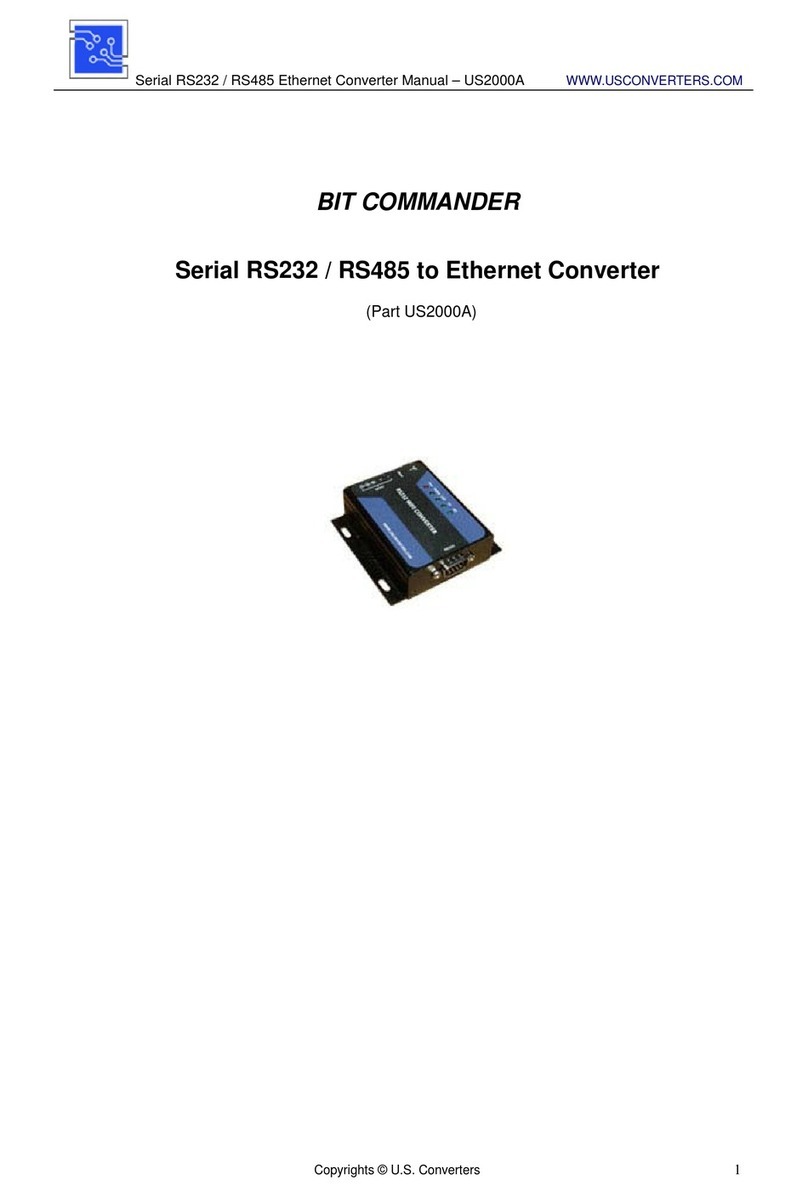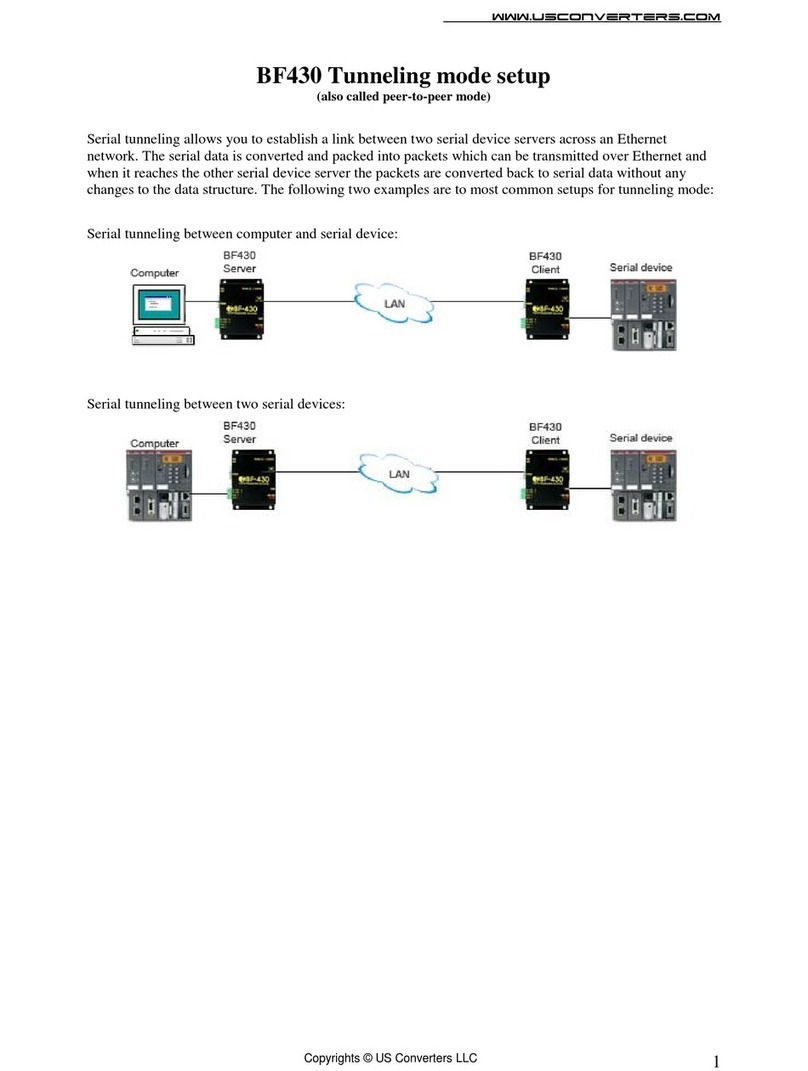USC520 / USC540 User Manual www.usconverters.com
U.S. Converters LLC 2 / 52 Copyrights © U.S. Converters
Contents
2. Overview.........................................................................................................................................................4
2.1. Brief Introduction..................................................................................................................................5
2.2. Features...............................................................................................................................................5
2.3. Basic Parameter...................................................................................................................................6
2.4. Dimension............................................................................................................................................6
2.5. Indicators and DIP switches.................................................................................................................7
2.6. DB9 Pin Definition................................................................................................................................9
3. Product Function..........................................................................................................................................10
3.1. Socket A Communication...................................................................................................................11
3.1.1. TCP Client Model.....................................................................................................................11
4.1.1 TCP Client Mode.......................................................................................................................11
3.1.2. TCP Server Mode....................................................................................................................12
3.1.3. UDP Client Mode.....................................................................................................................12
3.1.4. UDP Server Mode....................................................................................................................12
3.1.5. TCP and UDP Comparison......................................................................................................13
3.1.6. HTTPD Client...........................................................................................................................13
3.2. Socket B Communication...................................................................................................................14
3.4. Modbus Gateway...............................................................................................................................16
3.4.1. Transmit modbus protocol in transparent mode......................................................................16
3.4.2. Modbus RTU to Modbus TCP..................................................................................................17
3.4.3. ModbusActive Query Function................................................................................................18
3.4.4. Modbus Polling Function.........................................................................................................20
3.5. Extra functions ...................................................................................................................................23
3.5.1. DHCP.......................................................................................................................................23
3.5.2. DNS .........................................................................................................................................23
3.5.3. Self-Defined Heartbeat Function.............................................................................................24
3.5.4. Self-Defined Registration Package Function ..........................................................................25
3.5.5. Web to serial............................................................................................................................27
3.5.7. Network Printing Function .......................................................................................................28
3.5.8. Serial Port Packaging Mechanism ..........................................................................................30
3.5.9. Flow Calculation ......................................................................................................................30
3.5.10. Synchronous baud rate (RFC2217) ......................................................................................31
3.5.11. KeepAlive...............................................................................................................................32
3.5.12. Device ID ...............................................................................................................................32
3.5.13. Webpage Port........................................................................................................................32
3.5.14. Revise MAC...........................................................................................................................32
3.5.15. Firmware Upgrade.................................................................................................................33
3.5.16. Hardware Flow Control RTS/CTS & XON/XoFF...................................................................33































